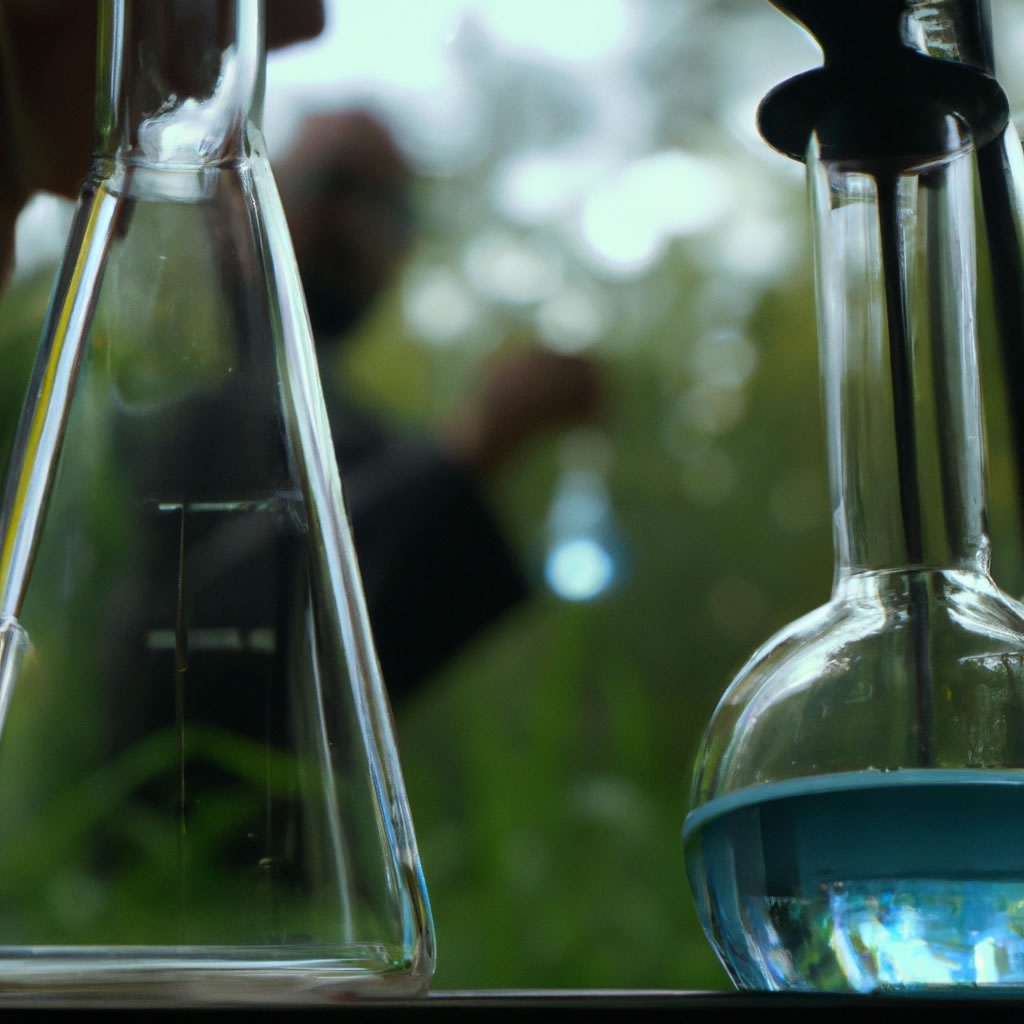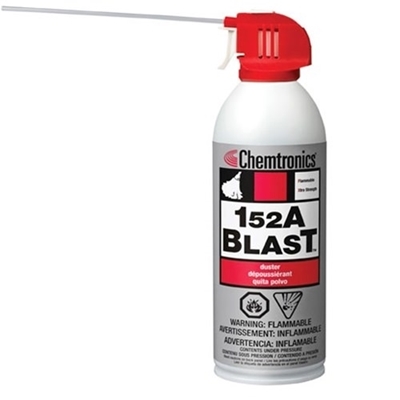About 70 years ago, a new class of chemicals were invented that improved everyday products used at home and outdoors, but in time we learned they can be bad for us and can last nearly forever. PFAS (perfluoroalkyl and polyfluoroalkyl substances), also known as “Forever Chemicals”, involve thousands of substances, which are water-, heat-, oil-, or corrosion-resistant.
Their properties make them useful in jet engines and in firefighting foams, but also in more common products such as fast food wrappers where PFAS properties prevent grease from soaking through.
Do they really last forever though? Firstly, in the open environment, we do not know exactly how long they last. In our bodies, they seem to persist for at least a few years or even decades, which is a lot longer compared to any other chemicals we are eating or drinking regularly. They stick around by binding to proteins in our blood, and have been found in different body tissues, especially those having a lot of blood vessels. Moreover, recent medical research indicates that these chemicals can be dangerous.
As a result of regulatory pressure, industry key investors have decided to take a step forward, and discontinue the use of PFAS in their portfolios. Among them, 3M is one of the biggest organizations that just announced plans to phase out their PFAS-based product lines by the end of 2025. The US conglomerate’s decision follows pressures from the Belgium government for their specific manufacturing facility, and more broadly recent initiatives from the US Environmental Protection Agency (EPA), to tighten legislation around the use and disposal of PFAS,making polluters more responsible for cleaning up contaminated areas.
See: “3M Announcement of Novec Phase-Out… What Does It Mean?”
What are PFAS?
PFAS, also known as Per- and Polyfluoroalkyl substances, are human-synthesized chemicals first introduced in the late 1940s. These compounds are ideally suited for several technical and industrial tasks due to their great thermal and chemical stability, and their capacity to resist water and grease. The name "forever chemicals" comes from the fact that PFAS are highly persistent – they do not break down easily and can remain in the blood for a lifetime. Unfortunately, they are also associated with a wide range of serious health issues.
Detrimental changes to health can be brought on by even small quantities of PFAS in the body. Kidney, liver, and testicular are among the types of cancers resulting from certain PFAS contamination. Additionally, exposure to PFAS may increase the risk of high cholesterol, which can lead to heart attacks; reproductive toxicity, which is linked to birth defects and infertility; developmental toxicity, which is linked to a lower IQ; and preeclampsia, which includes high blood pressure and is linked to kidney disease for pregnant women [1].
Minnesota-based 3M is facing multibillion-dollar lawsuits from people and states, who claim that PFAS-based products have polluted waterbodies and have led to health issues including cancer. In November 2022, 54 global chemical firms received letters from investors − holding more than $8 trillion in assets − pleading with them to phase out the usage of the compounds. The stakeholders have also demanded more openness, including disclosure of the number of dangerous chemicals they generate [2].
Where are PFAS found?
Perfluoroalkyl and Polyfluoroalkyl Substances are widely used to produce greaseproof, waterproof, non-stick, and stain-resistant products. As mentioned by the Agency for Toxic Substances and Disease Registry (ATSDR); “Most people in the United States have been exposed to PFAS and have PFAS in their blood”[3]. Estimations by the Centers for Disease Control and Prevention (CDC), suggests that the number can reach up to 97% of the American population [4]. As of today, these long-lasting chemicals can still be found in:
- Drinking water: Contamination can happen via the leakage of firefighting foam into the ground, especially at military bases, training centers, and airports.
- Food packaging: Bakery bags, food wrappers, microwave bags, disposable trays, takeout containers, and pizza boxes, among others.
- Personal care products: Dental floss, concealer, lip balm, eyeliner, foundation, mascara, nail polish, and even menstrual underwear.
- Furniture products: Window treatments, rugs, carpets, beddings, car seats, furniture textiles, and items labeled as “water- or stain-repellent”.
- Other articles: Firefighting foam, outdoor gear, umbrellas, aerospace electronics, medical equipment, non-stick pans (Teflon), and many more.
Having thousands of variations in PFAS and numerous exposure sources makes prevention and cleanup efforts especially hard for researchers to identify. However, Do all PFAS represent a huge concern for humans and the environment? The initial EPA’s modus operandi was not to just ban all PFAS but to “pursue a comprehensive approach to proactively prevent PFAS from entering air, land, and water at levels that can adversely impact human health and the environment”[5].
Early on January 2023, the EPA changed the status of one chemical (1-octane sulfonic acid, 3,3,4,4,5,5,6,6,7,7,8,8,8-tridecafluoro-) previously identified as a PFAS, to a grey square in the Safer Chemical Ingredients List (SCIL). Meaning that there was not enough data to determine whether the substance posed a risk to human health or not. Until now, the chemical has not been used in any Safer Choice-Certified product approved by EPA and will be removed if there is no relevant information justifying its continuity in the SCIL within 12 months [6].
How are PFAS regulated?
Globally
A global agreement known as the 18th Stockholm Convention on Persistent Organic Pollutants (POPRC-18) aimed to ban or regulate the use of the most dangerous substances. Among the different types of PFAS, perfluorooctanoic acid (PFOA) and perfluorooctane sulfonic acid (PFOS) have been subject to global restrictions since 2009, and to gradual global elimination since 2019. Meanwhile, PFHxS (Perfluorohexane sulfonate) and related substances have been subject to global elimination without exception since 2022 [7].
On a global scale, instead of focusing on just one or two PFAS compounds − such as PFOA or PFOS − the majority of governments are grouping them to tackle efficiently. Examples of regulations using this strategy include those in the EU, Denmark, and Canada, and US states including California, Vermont, and Maine. Some PFAS producers and industry organizations vehemently oppose these standards, which do not focus on individual PFAS and could have an outsized economic impact in the long term [8].
Locally
In America, some states have begun to enact their own legal restrictions for certain PFAS in the lack of a federal norm. The state of New Jersey has set guidelines of 13 ppt for PFOS and 14 ppt for PFOA, and was the first to set a maximum contamination limit for the compound PFNA at 13 ppt. Several states, including California, Massachusetts, Michigan, New Hampshire, New Jersey, New York, and Vermont, have either established or proposed restrictions for PFOA and PFOS levels, especially in drinking water.
Local organizations like the Environmental Working Group (EWG) have suggested and supported safe levels of PFAS in drinking water at 1ppt, an international standard supported by other independent agencies [9]. In the US, phasing out PFAS is unavoidable, beginning with carpets, rugs, and fabric treatments on 1 January 2023 − continuing until January 2030 for non-essential items. This transition would require manufacturers to use the “least toxic alternative” when replacing PFAS in those products.
For cleaning solvents, what alternatives exist for ‘Forever Chemicals’?
In applications, like manual cleaning, where flammable solvents can be safely used, there are many ways to avoid PFAS solvents. For example, alcohol and hydrocarbon based products offer great cleaning performance without the use of PFAS chemicals.
The challenge becomes much greater when the solvent must be nonflammable for safety reasons (e.g. used around sparks and flames), and by the requirements of the cleaning process. Vapor degreasing, a high precision method of cleaning in the vapor phase of the solvent, is commonly used is critical applications like aerospace and medical device manufacturing. This process requires the boiling of the solvent, so only nonflammable solvents are used.
For vapor degreasing, the only solvents that do not contain PFAS are TCE (Trichloroethylene, CAS #79-01-6), nPB (n-Propyl Bromide, CAS #106-94-5), which are considered very toxic. These are being targeted by the EPA, OSHA, and a number of state and municipal regulatory agencies.[10]
So in short, for vapor degreasing there is no getting around PFAS at this time. It is the only viable option at the moment.
For replacing 3M Novec solvents, Techspray provides direct chemical crosses and options that fit the same criteria, but at a higher cleaning performance. Under the brand names PWR-4™ and Precision-V™, Techspray products are engineered to be less toxic than many other solvents commonly used in vapor-degreasers: e.g., TCE, nPB, and Perc. Companies across industries are turning to Techspray as a replacement supplier for expensive and difficult-to-find 3M Novec solvents.
For a full list of Novec replacements, go to https://www.chemtronics.com/novec-solvent-replacements. Contact Chemtronics at 678-928-6162 or [email protected] for free qualification testing. We are available to help qualify new cleaning processes, evaluate current processes, or troubleshoot contamination issues.
References
[1] Clean Water Fund. “PFAS: The Forever Chemicals.” Clean Water Action MA Fact Sheet, Apr. 2020, www.cleanwateraction.org/sites/default/files/MA_FactSheet _PFAS_04.14.20a.pdf.
[2] Smyth, Jamie. “3M To End 'Forever Chemicals' Production as Pressure Builds.” Financial Times (FT), 20 Dec. 2022, www.ft.com/content/7d95cdd3-601c-4026-a2bd-0df1a303424f.
[3] Agency for Toxic Substances and Disease Registry (ATSDR). “PFAS in the U.S. Population.” Per- and Polyfluoroalkyl Substances (PFAS) and Your Health, Centers for Disease Control and Prevention, 22 Dec. 2022, www.atsdr.cdc.gov/pfas/health-effects/us-population.html.
[4] National Institute of Environmental Health Sciences. Perfluoroalkyl and Polyfluoroalkyl Substances (PFAS). U.S. Department of Health and Human Services, Jan. 2023, www.niehs.nih.gov/health/topics/agents/pfc/index.cfm #:~:text=One%20report%20by%20the%20Centers,blood%20of%2097%25%20of%20Americans.
[5] United States Environmental Protection Agency. “PFAS Strategic Roadmap: EPA's Commitments to Action 2021-2024.” EPA, Environmental Protection Agency, Nov. 2022, www.epa.gov/pfas/pfas-strategic-roadmap-epas-commitments-action-2021-2024.
[6] JD Supra. “EPA Adds Nine Chemicals and Removes One PFAS from Safer Chemical Ingredients List.” JD Supra, Bergeson & Campbell, P.C., Jan. 2022, www.jdsupra.com/legalnews/epa-adds-nine-chemicals-and-removes-one-3715195/.
[7] IISD Earth Negotiations Bulletin. “Summary Report 26–30 September 2022.” 18th Meeting of the Persistent Organic Pollutants Review Committee to the Stockholm Convention (POPRC-18), Oct. 2022, enb.iisd.org/stockholm-convention-pops-review-committee-18-summary.
[8] Chemical Watch. “Where Are Global PFAS Regulations Heading?” An Enhesa Company, Nov. 2021, chemicalwatch.com/351604/where-are-global-pfas-regulations-heading.
[9] Environmental Working Group. “PFAS Contamination of Drinking Water Far More Prevalent Than Previously Reported.” New Detections of ‘Forever Chemicals’ in New York, D.C., Other Major Cities, Jan. 2020, www.ewg.org/research/national-pfas-testing.
[10] United States Environmental Protection Agency. “Final Risk Evaluation for Perchloroethylene” EPA, Environmental Protection Agency, Dec. 2022, https://www.epa.gov/assessing-and-managing-chemicals-under-tsca/final-risk-evaluation-perchloroethylene.





